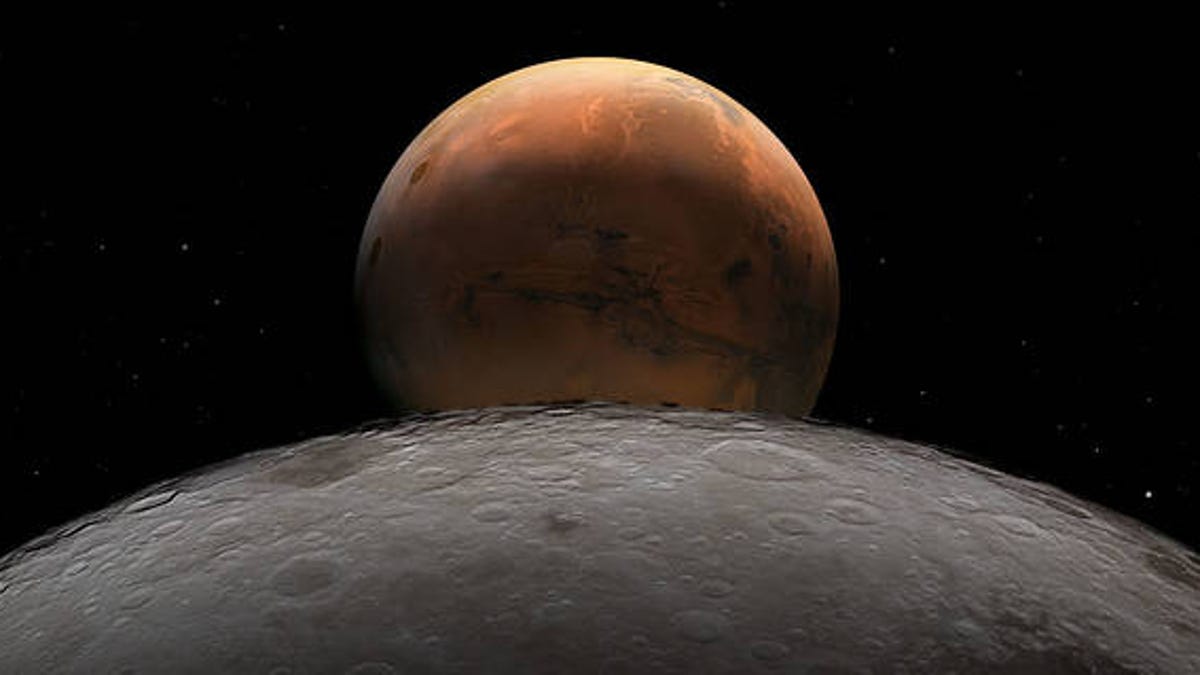'Tis the Season... to Get the Best View of Mars in 2022: How to See It Tonight
Check out the red planet before it's rudely -- or remarkably -- obscured by the full "cold moon."

The sky is going to appear crowded around the moon, but only from our vantage point.
This week, Mars will be about the closest it's been to Earth in 2022, before it performs a brief disappearing act behind the full moon on Wednesday night.
Mars' official date of closest approach came either late Wednesday or early Thursday of last week depending on your time zone, but for the next several nights the orange-ish dot of light will appear slightly larger than normal and will be easy to spot with the naked eye. It should be visible in the east after sunset and then rise higher in the sky toward the middle of the night.
The real show comes Wednesday evening, Dec. 7, into the following morning when the full "cold" moon will pass in front of, or "occult," the seemingly super-sized rouge world.
"Cold moon" is the nickname for the first full moon in December, which will require no explanation for many people living in the Northern Hemisphere, particularly in most of North America and Europe.
Lunar occultations of planets aren't particularly rare. In fact, there was one involving Mars earlier in 2022 and there will be another in January. But they are likely rare from any given single location on planet Earth. Next week's occultation of Mars will be visible to the vast majority of North America and much of Europe. (You can check visibility and timing from your location here).
Many locations will see Mars slip behind the moon for a full hour before slowly re-emerging from the other side of the lunar disc.
If you've been looking to practice your astro-photography skills, this is a prime opportunity. Please share what you capture with me on Twitter @EricCMack.

